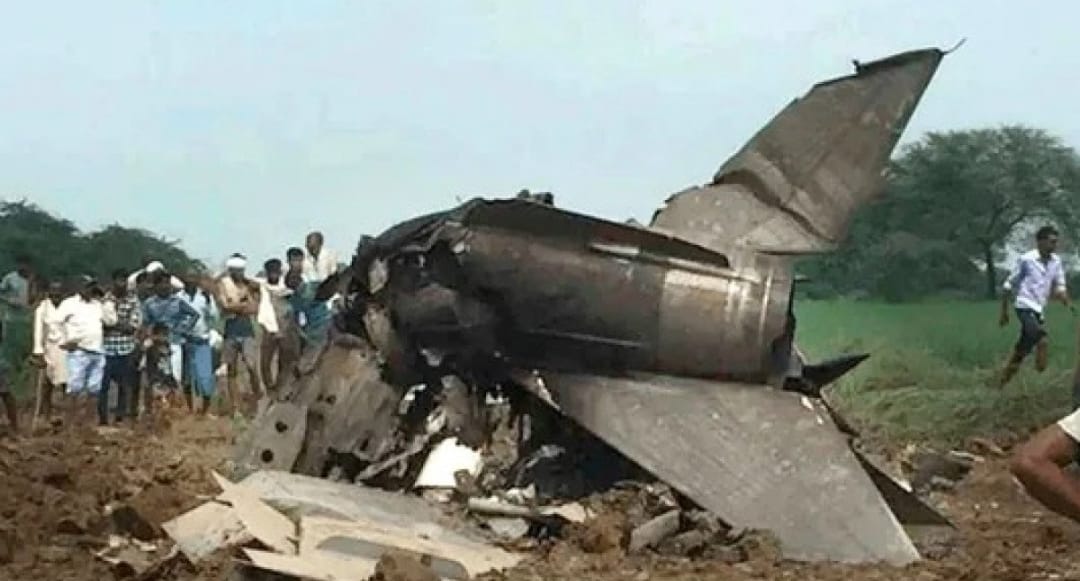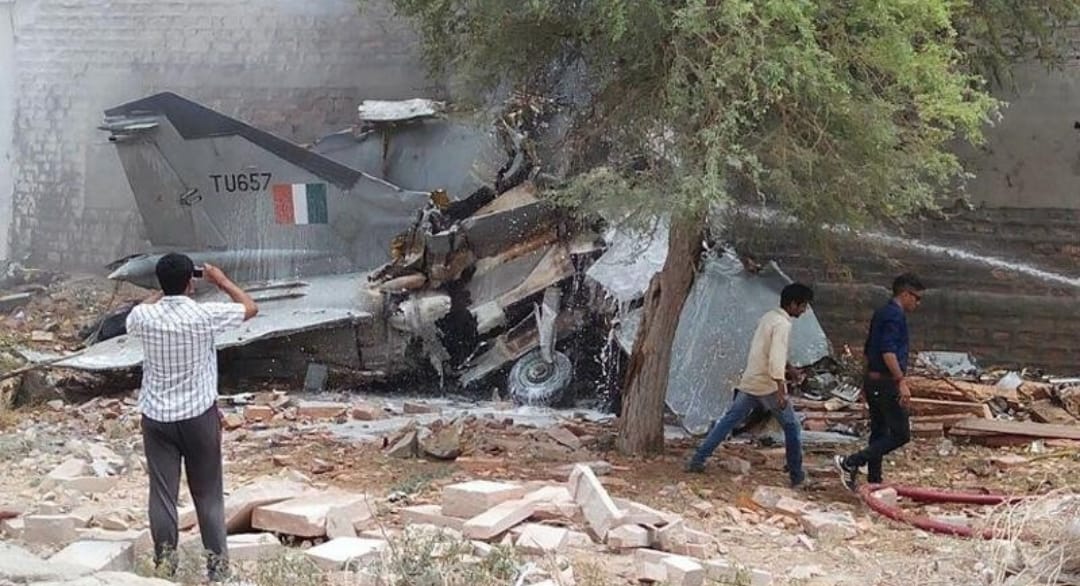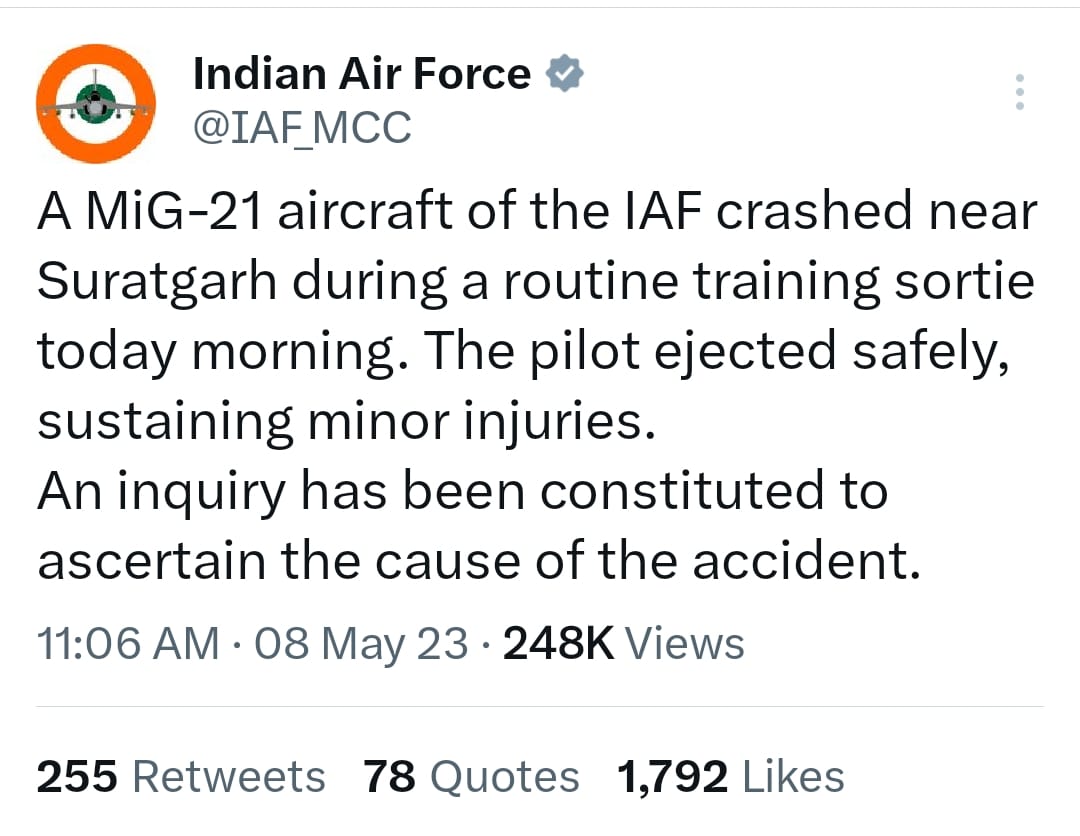In the world of aerial defence, the MiG-21 fighter jets of the Indian Air Force are a mystery. Sleek and powerful in their appearance, and pioneers in their class, they also crash with almost unfailing regularity, as one plane did yesterday in Rajasthan, crashing into a village house, killing three civilians. The pilot survived this time.
This MiG-21 crash comes just 10 months after the July 2022 crash of a MiG training jet in Rajasthan that killed two pilots. Also, there were three MiG-21/MiG-21 Bison crash incidents in the first half of 2021 — in Rajasthan on January 5, without any fatality; in Madhya Pradesh on March 17, killing Group Captain Ashish Gupta; and in Punjab on May 20, killing pilot Abhinav Choudhary. In October 2022, a MiG-29K aircraft of the Indian Navy crashed in the sea near Goa while on a routine sortie; the pilot ejected safely.
Yesterday’s crash site saw people milling around the mangled remains of the fighter jet, smoke rising from the ground, and a house that was reduced to a pile of bricks when the falling jet rammed into it.
Superintendent of Police Sudheer Choudhary of Hanumangarh district, which included the crash-affected village Bahlolnagar, told the media that two women were killed on the spot by the crash; another wounded victim died in the hospital; and three people sustained injuries.
The Indian Air Force tweeted that it “regrets this loss and offers its deepest condolences to the bereaved families”. With this crash, the MiG jet has reinforced its reputation of being a “flying coffin” or a “widow-maker”. The loss of life caused by a MiG-21 was even featured in a Bollywood film, the Aamir Khan-starrer Rang De Basanti (2006), released five years after Flight Lieutenant Abhijit Gadgil was killed in a September 2001 fighter jet crash.
Despite so many deaths during routine training flights, MiG fighter jets — they take their name from the Mikoyan-Gurevich design group of Russia from the Soviet Union era — have been the mainstay of the Indian defence services for a long time. The MiG-29 is reportedly one of the top 10 fighter jets in the world in terms of the total number of units sold so far. The MiG-21 jet, first inducted by India as an 874-strong fleet in 1963, now does less of active military duty and is used more for training exercises.
Describing the first truly powerful MiG aircraft, Britannica.com said: “Twin engines made the MiG-19, first flown in 1953, the first supersonic fighter of European manufacture, but it was surpassed in 1955 by the MiG-21, a lightweight, single-engine interceptor capable of flying at twice the speed of sound. The basic version, which entered service in 1958, was a simple, low-cost day fighter that was highly manoeuvrable, easy to maintain, and able to operate from unimproved airfields.”
The advantages of the MiG-21 are, therefore, undeniable. However, instead of celebrating a landmark — this is the diamond jubilee year of the MiG in India — the current accident has reinforced the fear that if a MiG-21 takes off, even in peace time, someone either in the air or on the ground might die.







